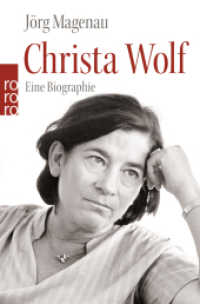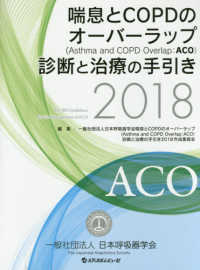Full Description
This edited volume brings together leading scholars to explore the emergence of the stress concept and its ever-changing definitions since the 1940s.
Stress is one of the most widely utilized medical concepts in modern society. Originally used to describe physiological responses to trauma, it is now applied in a variety of other fields and contexts, such as in the constructionand expression of personal identity, social relations, building and engineering, and the various complexities of the competitive capitalist economy. In addition, scientists and medical experts use the concept to explore the relationship between an ever-increasing number of environmental stressors and the evolution of an expanding range of mental and chronic organic diseases, such as hypertension, gastric ulcers, arthritis, allergies, and cancer.
Thisedited volume brings together leading scholars to explore the emergence and development of the stress concept and its definitions as they have changed over time. It examines how stress and closely related concepts have been used to connect disciplines such as architecture, ecology, physiology, psychiatry, psychology, public health, urban planning, and a range of social sciences; its application in different settings such as the battlefield, workplace, clinic, hospital, and home; and the advancement of techniques of stress management in a number of different national, sociocultural, and scientific locations.
Contributors: Theodore M. Brown, David Cantor, Otniel E. Dror, Rhodri Hayward, Mark Jackson, Robert G. W. Kirk, Junko Kitanaka, Tulley Long, Joseph Melling, Edmund Ramsden, Elizabeth Siegel Watkins, Allan Young.
David Cantor is acting director, Office of History, National Institutesof Health. Edmund Ramsden is Wellcome Trust University Award Research Fellow at the School of History, Queen Mary, University of London.
Contents
Introduction
Evaluating the Role of Hans Selye in the Modern History of Stress
Stress and the American Vernacular: Popular Perceptions of Disease Causality
Resilience for All by the Year 20-
From Primitive Fear to Civilized Stress: Sudden Unexpected Death
"Stress" in US Wartime Psychiatry: World War II and the Immediate Aftermath
The Machinery and the Morale: Physiological and Psychological Approaches to Military Stress Research in the Early Cold War Era
Making Sense of Workplace Fear: The Role of Physicians, Psychiatrists, and Labor in Reframing Occupational Strain in Industrial Britain, ca. 1850-1970
Work, Stress, and Depression: The Emerging Psychiatric Science of Work in Contemporary Japan
The Invention of the "Stressed Animal" and the Development of a Science of Animal Welfare, 1947-86
Memorial's Stress? Arthur M. Sutherland and the Management of the Cancer Patient in the 1950s
Stress in the City: Mental Health, Urban Planning, and the Social Sciences in the Postwar United States
Sadness in Camberwell: Imagining Stress and Constructing History in Postwar Britain








